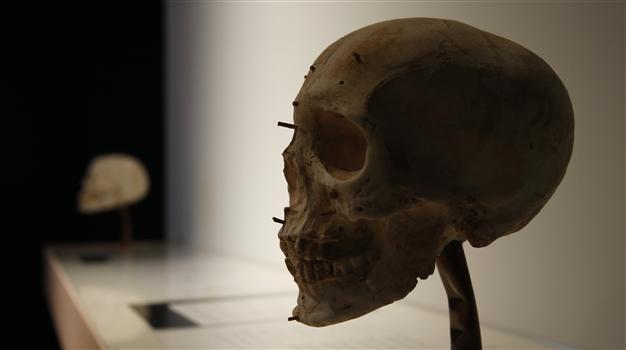London show dissects history of forensic science
LONDON - Agence France-Presse

AP Photo
Forensic science, which has fascinated generations with its unravelling of gruesome crime mysteries, is being put under the microscope in an exhibition of real criminal investigations in London.
"Forensics: The anatomy of crime" at the Wellcome Collection traces the art of forensic inquiry, spanning 18th-century Japanese artistic studies of decomposition to Victorian murder cases.
One of the hundreds of exhibition pieces on display from February 26 to June 21 is a miniature crime scene of disturbing realism laid out in a dollhouse.
The front door is ajar, a newspaper rests casually on a chair, while on a sofa lies a corpse.
Created in the 1940s by investigative pioneer Frances Glessner Lee, the dollhouse poses the question "what happened, and who is the murderer?"
It was used to teach investigators to use more systematic approaches to gathering evidence, and is still used as an example by forensic investigators.
Such approaches to solving crime became prominent in the 19th and 20th centuries and continue to inspire popular novels and films.
"Ever since the early crime novels of the 19th century, the cultural fascination with death and detection has continued to grow," said museum curator Lucy Shanahan.
The interest is "encapsulated in the multitude of popular television dramas that have brought the fictional world of violent crime, police procedure and cutting edge forensic techniques into the comfort of our living rooms".
The trend is nothing new.
The exhibition contains an 1888 scale map of "Mitre Square", where the still-unidentified London serial killer known as Jack the Ripper murdered one of his victims, Catherine Eddowes.
Drawn by Frederick William Foster, an architect commissioned for the work, the map includes the figure of Eddowes, with multiple stab wounds to her face, throat and stomach.
Though forensics failed to uncover the identity of the most famous serial killer in history, it did prove decisive 47 years later in another case that gripped Britain.
In 1935, one of the first uses of fingerprinting and X-rays helped identify Buck Ruxton as guilty of the murder of his wife and servant.
Visitors to the exhibition can see a small vial containing maggots taken from the bodies of the victims -- something that allowed investigators to calculate the day of their death.
The exhibition includes sections dedicated to the crime scene, the search, the courtroom and the morgue.
A post-mortem examination is a "last opportunity to question the dead", said Shanahan, standing at a long ceramic dissection table used until 1944 and traced with thin gutters to allow the flow of blood.
More hygienic and easier to clean than previous models, which were made of wood, ceramic tables have now been superceded by stainless steel.
The exhibition also pays tribute to scientists who advanced the discipline.
These include Edmond Locard, who ran an early police laboratory and became known as the Sherlock Holmes of France for his principle "every contact leaves a trace".
Shanahan said that popular fascination with forensics stems from a need to "make sense of these terrible acts".
But real people and decades of scientific work lie behind the image, she added.
"In this exhibition our intention is to uncover the real lives and personal narratives at the hearts of forensic medicine."
